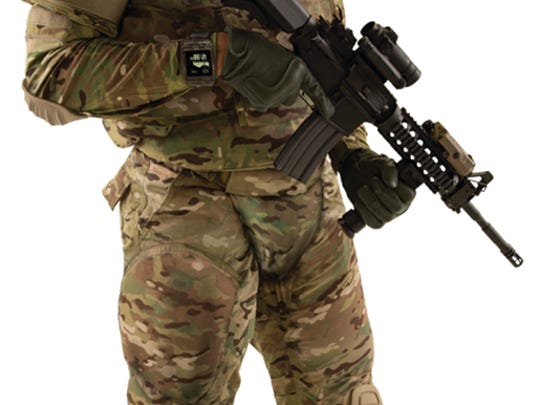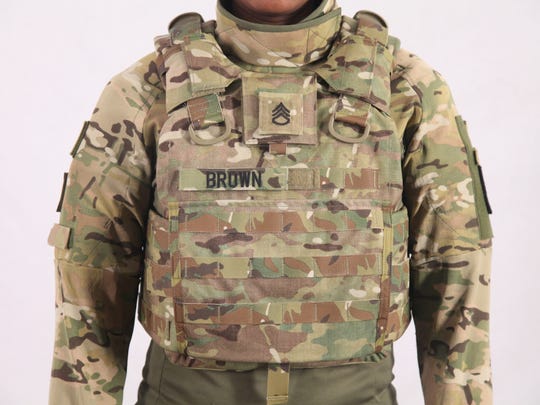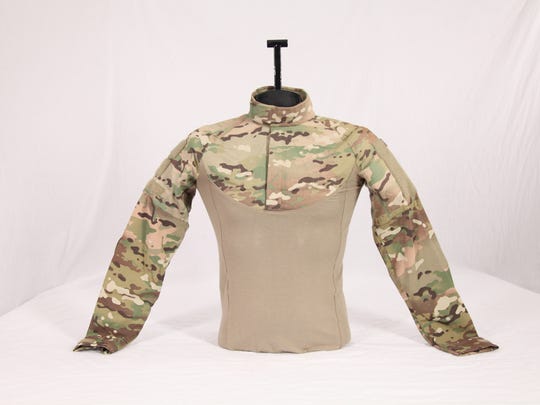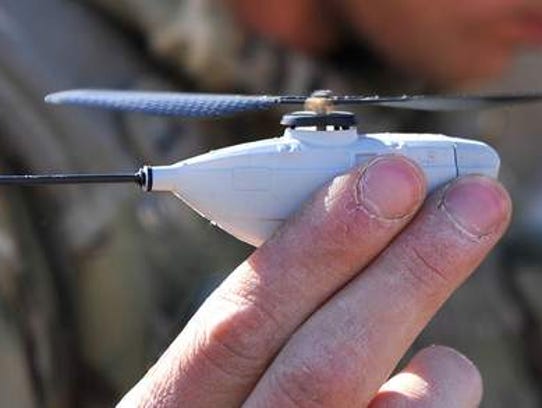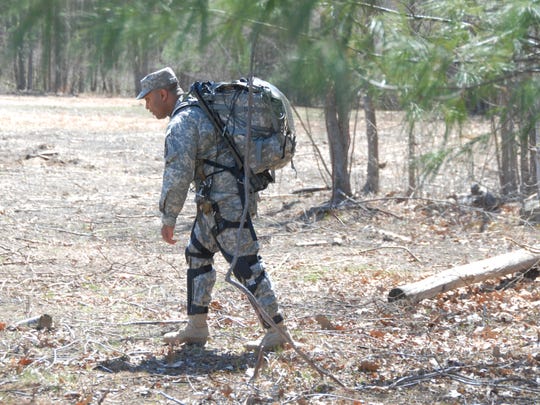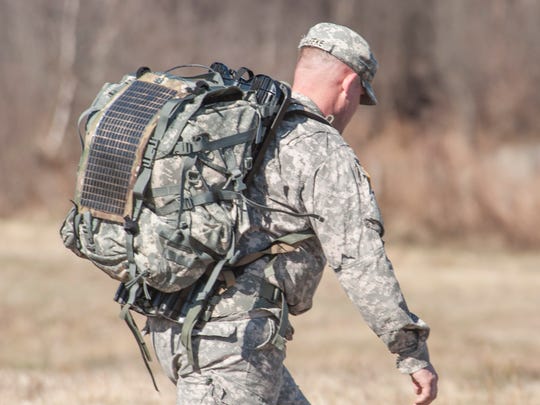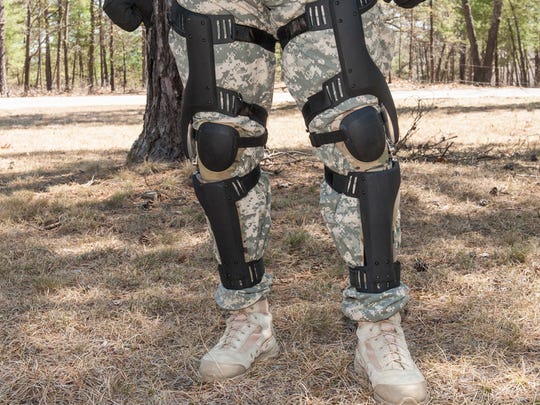5. IRAP (Increase Range Anti-Personnel)
What does it do? Along with the separate XM25 weapon, the Army is pursuing a new 40mm grenade cartridge that can be fired by the M320, one with better range and accuracy as well as advanced fuze functionality (when and why it explodes).
How heavy is it? Roughly the same as an M433 grenade round.
smart grenade, which can sense a wall or building or obstacle and then automatically explode just after passing it. SAGM required no pre-programming; just point your standard grenade launcher and shoot. The requirements from a December
indicate the Army wants increased range, lethality and accuracy as well as increased fuze functionality and versatility compared to the M433. The survey asked vendors what would trigger an airburst or explosion, and whether any other equipment like fire control would be needed for a demonstration.
Will this actually happen? With plans to become a program of record next year: very likely. The Army says the round is not competing against the XM25 — although every defense dollar is competing against every other defense dollar, especially in at least a relatively similar functionality. Unlike the XM25, SAGM doesn’t require the Army to buy new guns. If the price-tag doesn't vary too much from standard grenades, it’d be easy to imagine this supplementing or supplanting those purchases. Even if not, the Army still sounds like it's fairly committed, though no solicitation has been issued.
6. XM1112
What does it do? Designed for the M320 grenade launcher, the XM1112 is a 40mm airburst non-lethal munition. The round has a fuel enriched pyrotechnic payload, proximity air burst, and selectable delay option fuse. It is capable of a flash-bang effect, which causes visual and sound impairment.
It can be used for force protection, clearing, patrols, crowd control and offensive or defensive operations.
How heavy is it? About half a pound.
When might you have one? The rounds are scheduled to be fielded in fiscal year 2018.
Why should you care? This less-lethal round provides soldiers with a significant increase in standoff range compared with the currently fielded 40mm non-lethal rounds. The new XM1112 gives soldiers 300 meters of standoff, compared with the current 50 meters provided by the non-lethal rounds already in the force.
This new capability also helps minimize civilian casualties and collateral damage while giving soldiers more flexibility during escalation of force and in non-combat environments.
Will this actually happen? It looks really good, but fielding also depends on Army priorities and resourcing strategy.
7. XM1116 (non-lethal round)
What does it do? This non-lethal extended range marking munition is designed for the 12-gauge shotgun. It can be used for force protection, crowd control, patrols and at checkpoints. It is similar to a bean bag round, and it marks its target so soldiers can later identify or capture the person they were targeting.
How heavy is it? 1.43 ounces.
When might you have one? The Army is slated to field the XM1116 in the fourth quarter of fiscal 2018.
Why should you care? The 12-gauge XM1116 provides an improved capability that allows soldiers to employ non-lethal marking capabilities at an effective range of 30 to 50 meters. This additional capability helps minimize civilian casualties and collateral damage while giving soldiers more flexibility during escalation of force and in non-combat environments.
Will this actually happen? Most probably, but it also depends on Army priorities and resourcing strategy.
Integrated Head Protection System (Photo: PEO Soldier)
8. Integrated Head Protection System/Light Weight Army Combat Helmet
What do they do? Protect your dome. And in the case of the Integrated Head Protection System, also your jaw. And neck. And eyes. And hearing.
How heavy is it? Unclear, but lighter than your current combat helmet, in both cases, especially the Light Weight Advanced Combat Helmet.
When might you have one? The IHPS could arrive by the end of 2018. The LWACH is slated to start arriving at DLA in early 2017.
Why should you care? PEO Soldier has been working on a more comprehensive helmet with a more comfortable fit. Like a number of Army programs, modularity will play a role, with a soldier able to remove the a jaw protection element and a face shield as well as attach accessories to the helmet. Overall the helmet will have better fragmentation, ballistic and impact effectiveness. Current designs also feature ability to add ballistic appliques to the helmet, which provide additional protection. Meanwhile, the LWACH offers an even lighter-weight alternative to the ACH.
Will this actually happen? Seems likely. The Army has worked on the system for three years. The IHPS, the more heavy-duty and involved version, is currently in source-selection (the Army is picking a manufacturer). Meanwhile the LWACH just needs to pass some qualification testing.
9. TEP a.k.a. better body armor
What does it do? Stops/slows bullets and shrapnel, without slowing the soldier quite so much. Components of the Torso and Extremities Protection system — such as the Ballistic Combat Shirt and Modular Scalable Vest — will offer protection of the Army’s heavy-duty body armor, only at a lighter weight and with better range of motion.
The Amy is rolling out a variety of plates, tailor-able to the mission to be worn with the Modular Scalable Vest. (Photo: Courtesy PEO Soldier)
How heavy is it? Roughly 23 pounds loaded up with heavy plates (assuming medium size).
When might you have one? Most of the Armor should field around 2019, with new plates sometime thereafter.
The Army's new Ballistic Combat Shirt was designed to improve comfort. (Photo: Courtesy PEO Soldier)
Why should you care? Because you like the protection of the Improved Outer Tactical Vest (31 pounds, fully loaded) but think it could be lighter and less obstructive. The ballistic shirt consists of protection on the upper back, upper chest and neck, while completely covering the arms with ballistic/protective sleeves. That eliminates the bulky IOTV shoulder pads. The vest also offers similar protection at a lighter weight, thanks to new materials, and carries all the same plates as the IOTV. The Army is also developing new plates (the heaviest part) that are roughly 7 percent lighter than current plates for the same protection. They also allow for modularity to cater to different protection levels and body types. In addition, an outer-wear pelvic protector offers the same protection as the two-part system soldiers currently use, only, again, lighter and more agile. Meanwhile, a Load Distribution System consists of a ballistic combat belt that flows underneath the vest and a load-bearing spine that distributes weight to the waist rather than putting it all on the shoulders.
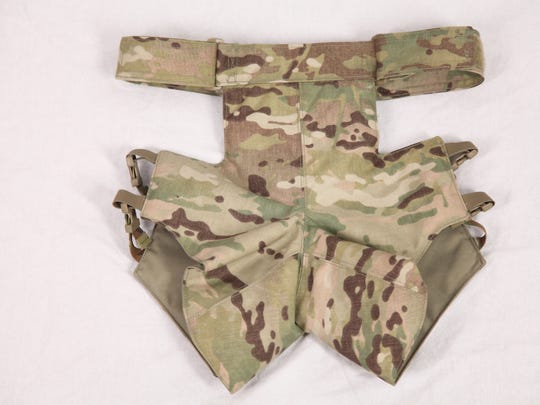
The Army's new Blast Pelvic Protection will replace two current protective items: an undergarment and an over-garment. (Photo: Courtesy PEO Soldier)
Will this actually happen? Most likely, yes. The armor has cleared the engineering and development phases last summer and has generated positive soldier feedback in testing.

